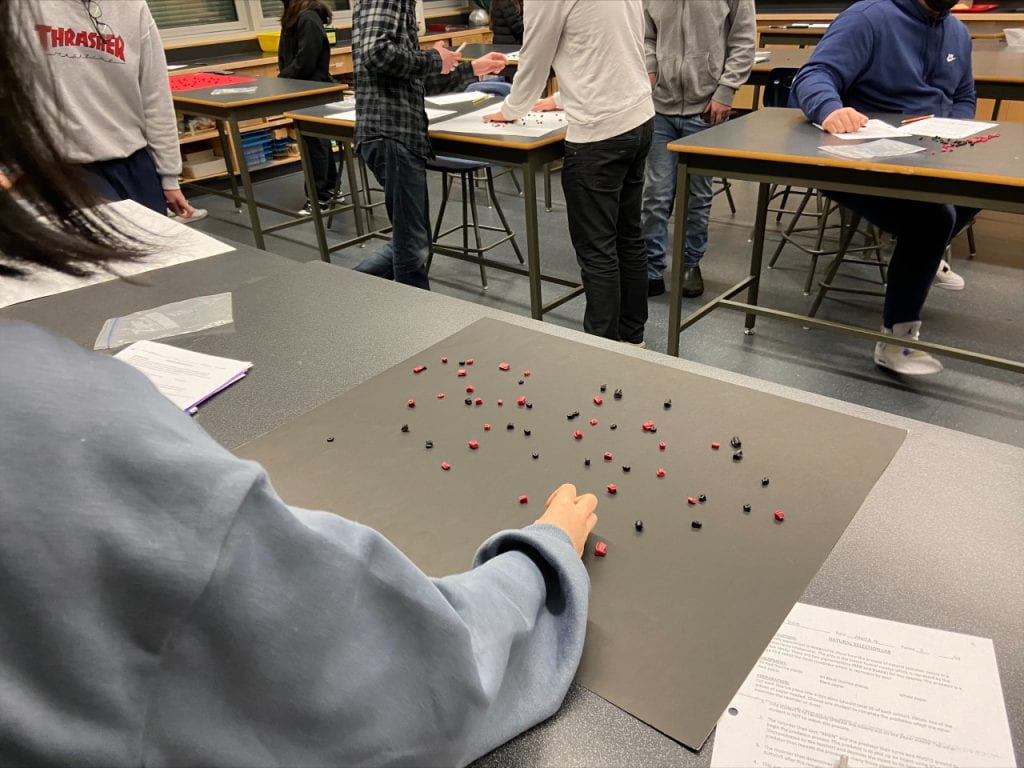
I demonstrated that I can collect and analyze evidence with the data of the number of prey that survived (Natural Selection Lab) and the observations of each utensil’s ability to survive (Feeding Frenzy Lab). I performed the labs with the I took the information from each lab and examined the results, along with the differences and causes. I used these examinations to answer the lab questions and connect the labs to the big ideas of evolution.
I demonstrated that I can connect evidence I collected to big ideas when I linked the results of the lab to the evolution theories learned in class. For example, in the Natural Selection activity, I analyzed the Number of Prey that survived and connected the results to the main points of Darwin’s theory. In the lab the differences in the licorice species such as color (black and red) and shape (short and long) is an example of Genetic Variation. Changes in the environment are demonstrated when the backgrounds of the activity would change color, giving an advantage or disadvantage based of the color variant of the species. Struggle for survival was shown with the large population of the licorice species constantly competing for resources, with a specific color of the species dying off decreases the amount of completion for others in the species. The overpopulation of the licorice, allowed enough to survive to reproduce in the future, despite the large death rate. Natural selection is displayed by the results of how many of each variants, depending on the advantages they had in their environment, soon the color with the most advantages will survive and reproduce more than the color that has the higher death rate, the outcome being the better color (trait) having the larger population.
I demonstrated that I can make predictions based on evidence when I took data from each lab and see how they would evolve over the next generations. In the Feeding Frenzy Lab I looked at the observations of each utensil and came to conclusions on which organisms would survive in the environments and which would go extinct or migrate. In the Natural Selection Lab, I observed the population of the licorice that survived and I made predictions on which group could pass on their genes to become the majority based on their favorable trait in that environment.
I demonstrated that I can draw reasoned conclusions when I gathered and analyzed data from each lab. I took this evidence and researched real life examples that connect to this lab to draw a well reasoned conclusion. For example, on the Natural Selection activity I predicted the elimination of the traits that were less useful based on the evidence that was obtained from the Lab. Then, I looked at something similar happening with a real life example, the Deer mice. The Deer Mice went through the natural selection process of the lighter colored mice being able to survive better and pass on their genes rather than the darker mice which could not camouflage as well and produced less offspring. The conclusion drawn was the more favorable traits with the best fitness would survive, pass down genes and become most of the population.
